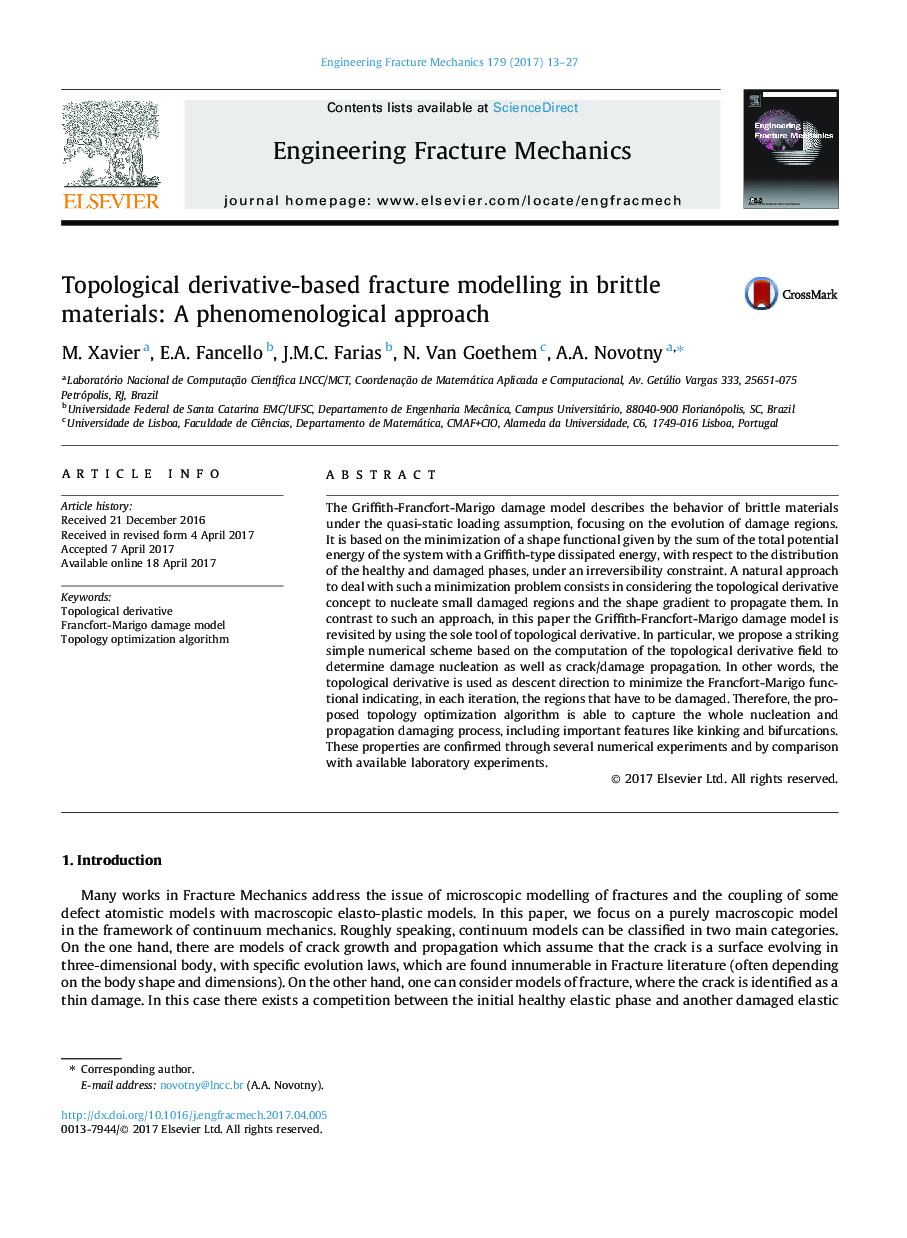| Article ID | Journal | Published Year | Pages | File Type |
|---|---|---|---|---|
| 5013925 | Engineering Fracture Mechanics | 2017 | 15 Pages |
Abstract
The Griffith-Francfort-Marigo damage model describes the behavior of brittle materials under the quasi-static loading assumption, focusing on the evolution of damage regions. It is based on the minimization of a shape functional given by the sum of the total potential energy of the system with a Griffith-type dissipated energy, with respect to the distribution of the healthy and damaged phases, under an irreversibility constraint. A natural approach to deal with such a minimization problem consists in considering the topological derivative concept to nucleate small damaged regions and the shape gradient to propagate them. In contrast to such an approach, in this paper the Griffith-Francfort-Marigo damage model is revisited by using the sole tool of topological derivative. In particular, we propose a striking simple numerical scheme based on the computation of the topological derivative field to determine damage nucleation as well as crack/damage propagation. In other words, the topological derivative is used as descent direction to minimize the Francfort-Marigo functional indicating, in each iteration, the regions that have to be damaged. Therefore, the proposed topology optimization algorithm is able to capture the whole nucleation and propagation damaging process, including important features like kinking and bifurcations. These properties are confirmed through several numerical experiments and by comparison with available laboratory experiments.
Keywords
Related Topics
Physical Sciences and Engineering
Engineering
Mechanical Engineering
Authors
M. Xavier, E.A. Fancello, J.M.C. Farias, N. Van Goethem, A.A. Novotny,
